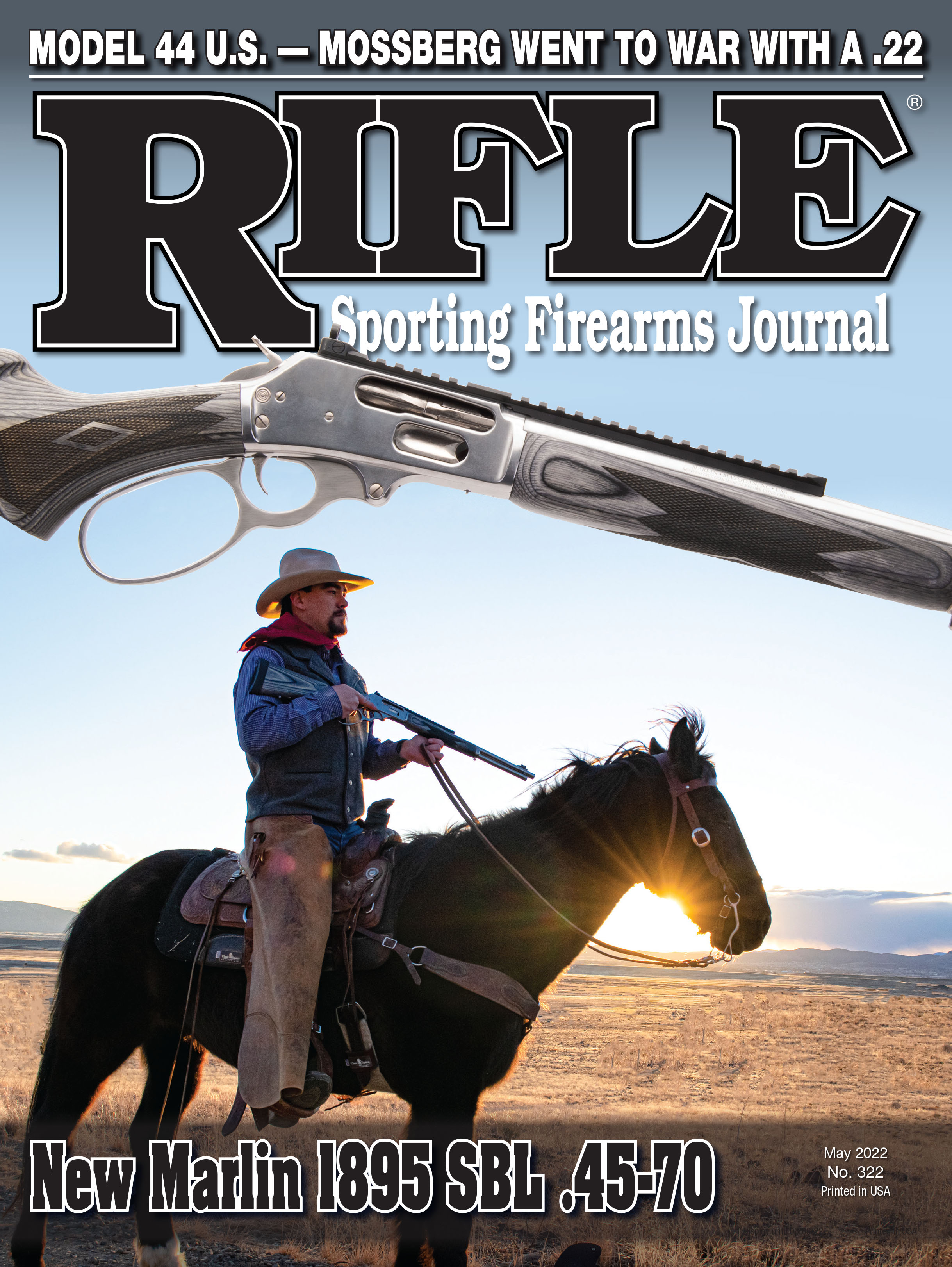Down Range
Steel Targets
column By: Mike Venturino | May, 22
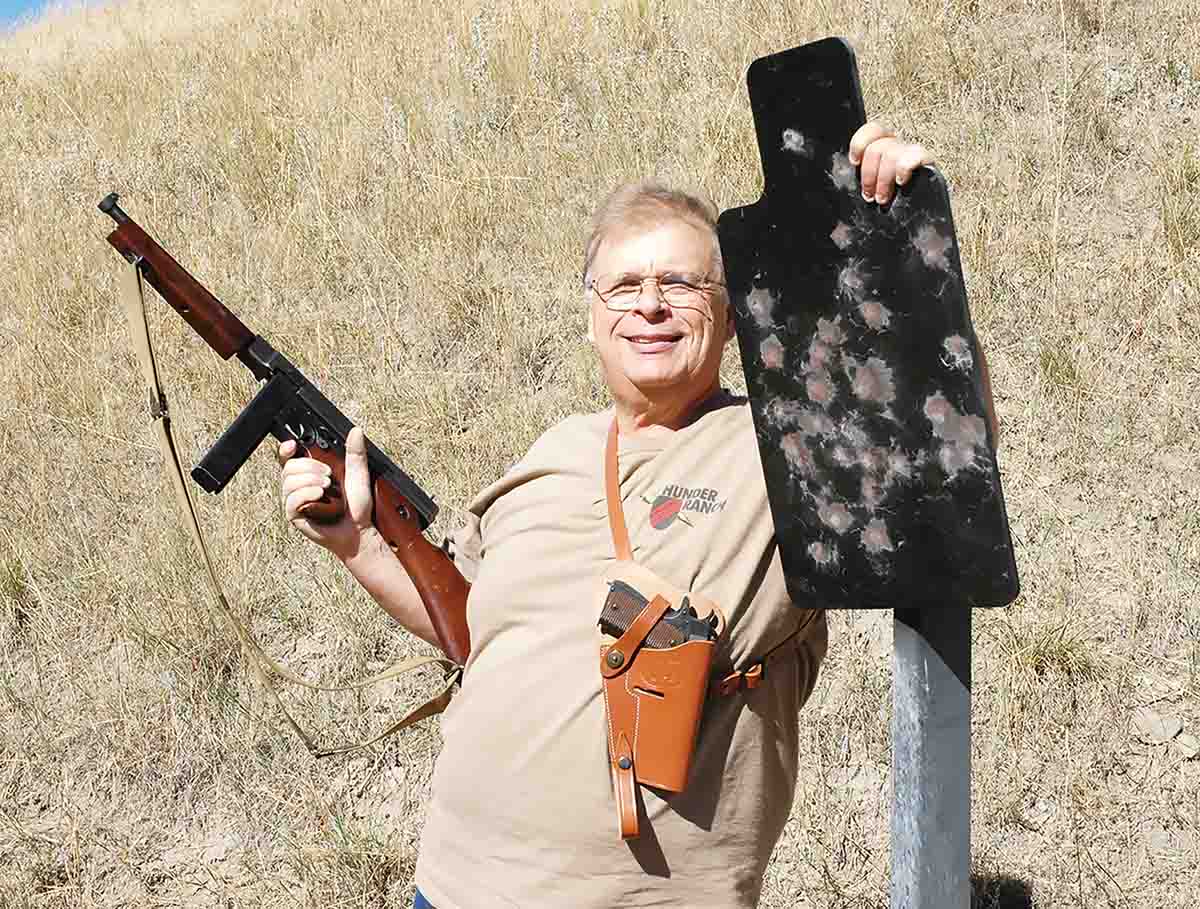
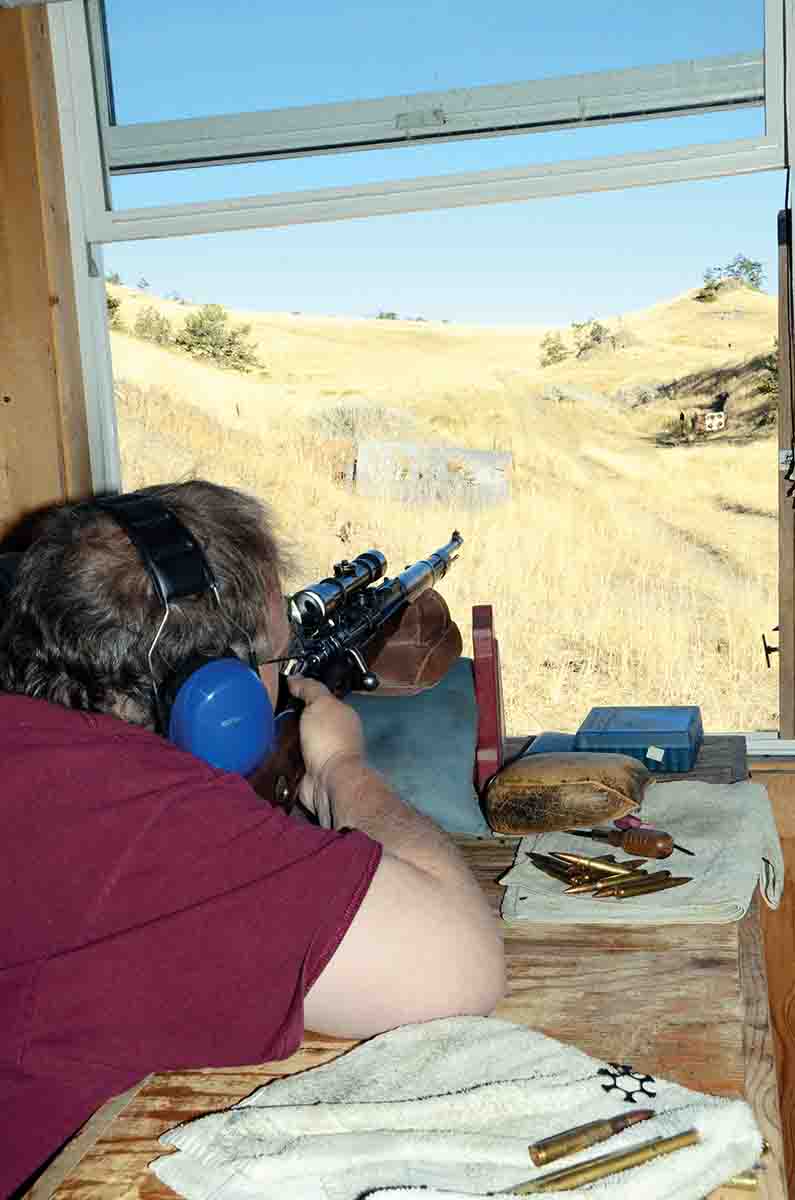
The day in question was in March. Our Montana winter had been long and dreary. At times, snow drifts blocked the gate to my shooting house for weeks at a time. I was starved for shooting. That particular day in question dawned bright, clear and windless. I thought, “This day I break my shooting fast.” Rifles and ammunition were loaded into the pickup, along with an array of paper targets to be stapled to plywood backers at 100, 200 and 300 yards. After that, the hardware was carried into my shooting house and I sat down at the bench and prepared to get some trigger time.
It didn’t happen! Between carrying in the guns and sitting at the bench, our area’s famous winds suddenly arrived, and every single one of my targets had blown away. I was in a frustrated froth! Back at the house, I looked up the number for the Action Target Company of Provo, Utah. At visits to Thunder Ranch, I had done plenty of rifle shooting at its PT Torso-style steel plate targets. They measure 13 inches wide by 24 inches tall and are cut from 3⁄8 inch AR550 steel. Weighing 55 pounds, they are available on stands of 1, 2, 3 and 4 feet. A fine design idea is that when bolted to their stands, the PT Torso targets angle slightly downward. All bullet fragments go into the ground instead of reflecting back toward shooters.
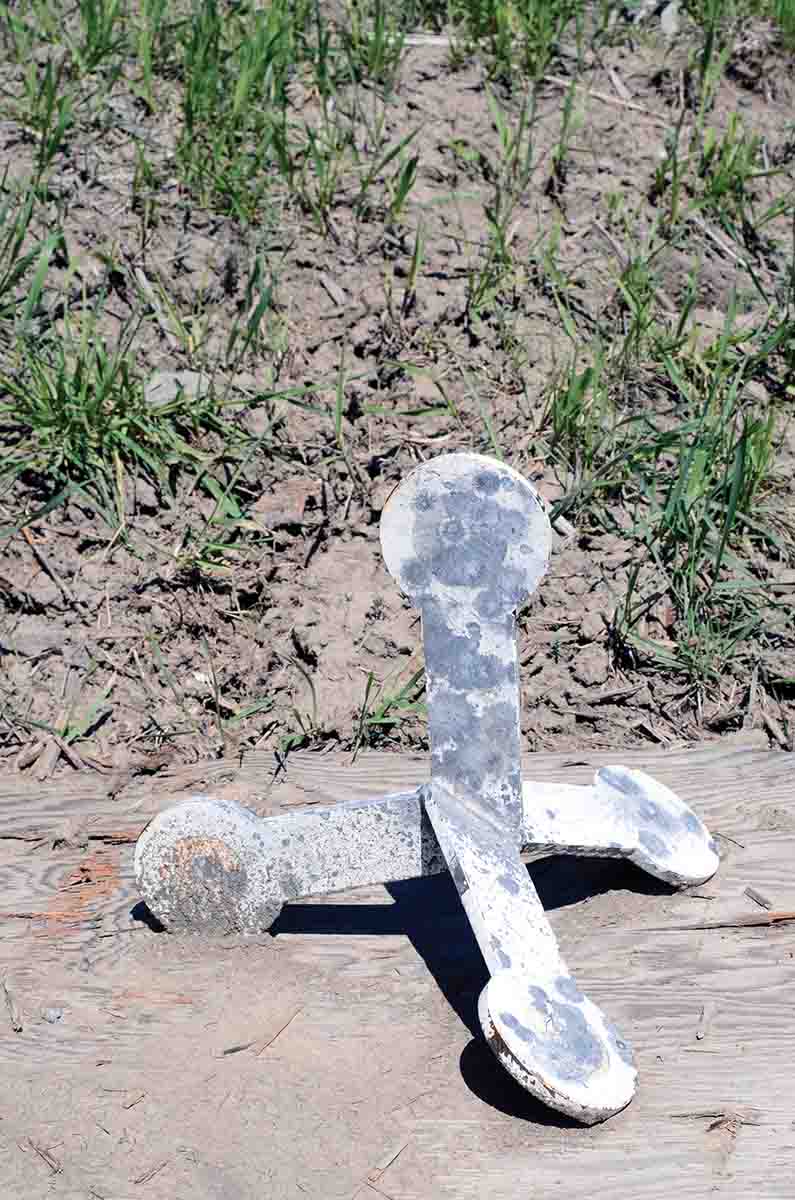
Over the phone, I ordered five torso plates. Stands ordered included one 2-feet tall, two 3-feet tall and two 4-feet tall. Upon arrival and assembly, these steel plates were put at each of my rifle shooting distances and the fifth set up on my pistol range, mostly for shooting my World War II submachine guns. They have given near total satisfaction with just a couple of minor glitches, mostly of my own creation.
Action Targets rates its PT Torso targets as good for rifles with velocity under 3,000 fps and said they should be placed at a minimum distance of 100 yards. Without thinking, I told a friend it was okay to fire a .300 Weatherby Magnum at the 100-yard target and its bullet burned right through the steel. My bad there! Another time, we fired some tripod-mounted machine guns at the 100-yard target with no problems, except some low shots chewed the mild steel stand a mite. My fault again!
Park County, Montana, is famous for winds, so the two taller PT Torso targets tend to blow over. (This winter, so far, the strongest gust has been 83 miles per hour.) That’s no problem, but to avoid continually setting them up after a wind storm, I’ve now anchored their stands with heavy-duty steel tent stakes. That has been my only problem in utilizing PT Torso targets.
Shooting my large assortment of World War II rifles, especially the sniper versions, at the various ranges, is one of my favorite rifle shooting pastimes. It’s interesting to zero one of the scoped rifles at 100 yards and then see how well first shot hits can be made out to 300 yards. Quite a few bullet strikes can accumulate before the targets need to be refreshed with a bit of black spray paint.
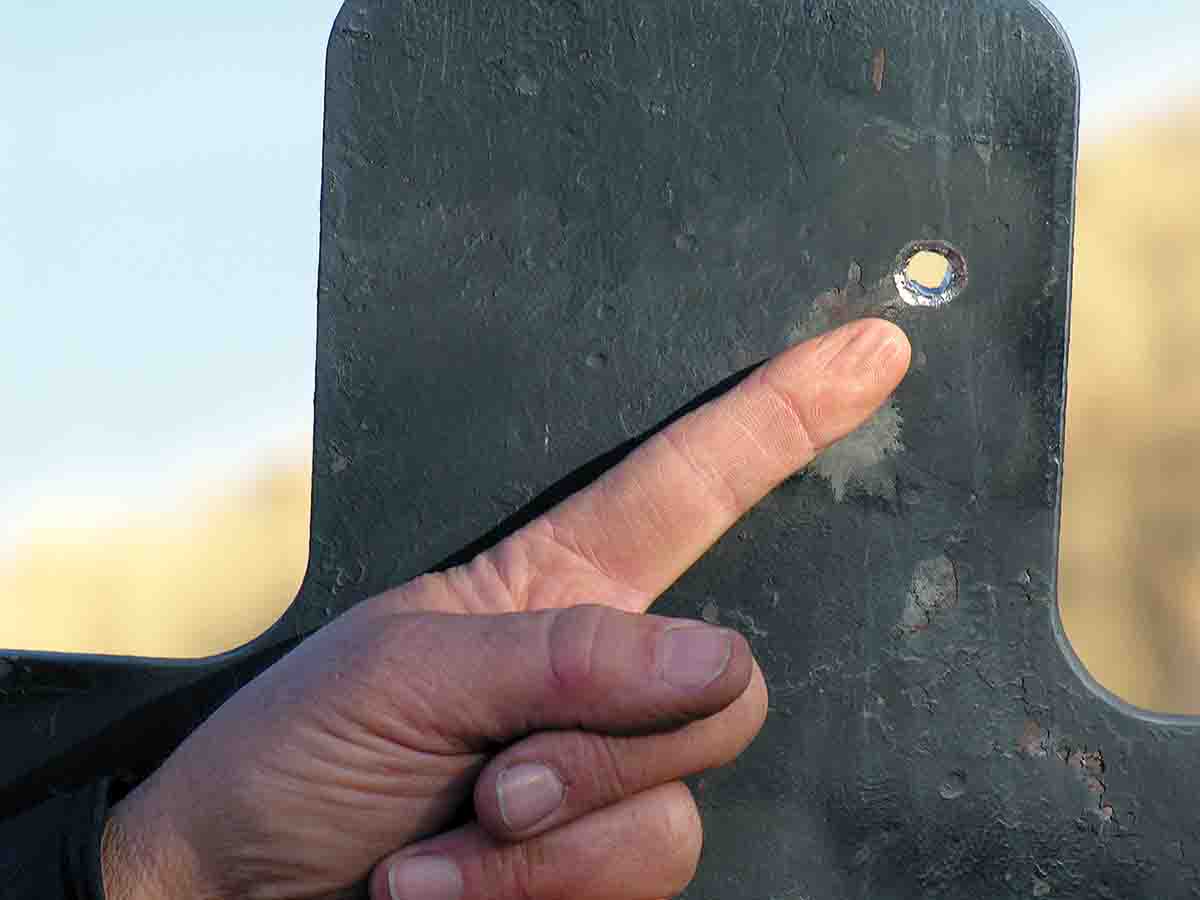
Perusing a Billings, Montana, gun show a few years back, I came across a most novel version of steel targets. It’s a product of Young’s Point Manufacturing of Billings (406-860-9916 or centsmt@msn .com). At that show, setting among many types of steel targets there was a four-legged device I’d never seen before. John Schmitz, proprietor of the company named them “Flippers.” Each of their slightly-angled, 4½-inch long legs ends with a disk of 33⁄8-inch diameter. Legs and disks are cut from the same piece of 3⁄8-inch steel, so the only welding is where the legs connect. The steel used is AR400. When I asked Schmitz why harder steel was not used, he replied, “In my experience, harder steels don’t weld as solidly as AR400.
The idea for Flippers is to set them out to 25 yards or more and then plink at them with mild caliber handguns or rifles. When the topmost disk is hit, the Flipper falls backward, presenting another disk and on and on and on. It’s a moving, reacting target that needs no resetting. Well, actually it doesn’t need resetting almost all of the time. Rarely, a bullet just barely winging the side of the topmost plate will turn a Flipper sideways. For me, revolver hits will eventually move it too far away and that’s when I take up a pistol cartridge levergun. The flippers are ingenuous little devices. I’ve bought four to toss out in front of my shooting house. With a safe backstop for hundreds of yards, I can walk them around out there for quite some time without causing my back undue distress. (By the way, smaller Flippers are made for .22 rimfire shooting.)
Fun and practice shooting at steel doesn’t totally replace paper target shooting. Even in my senior years, there is still much to learn by shooting groups. But, when the “work” is done for the day, taking a bit of time for the steel targets is something I look forward to.


